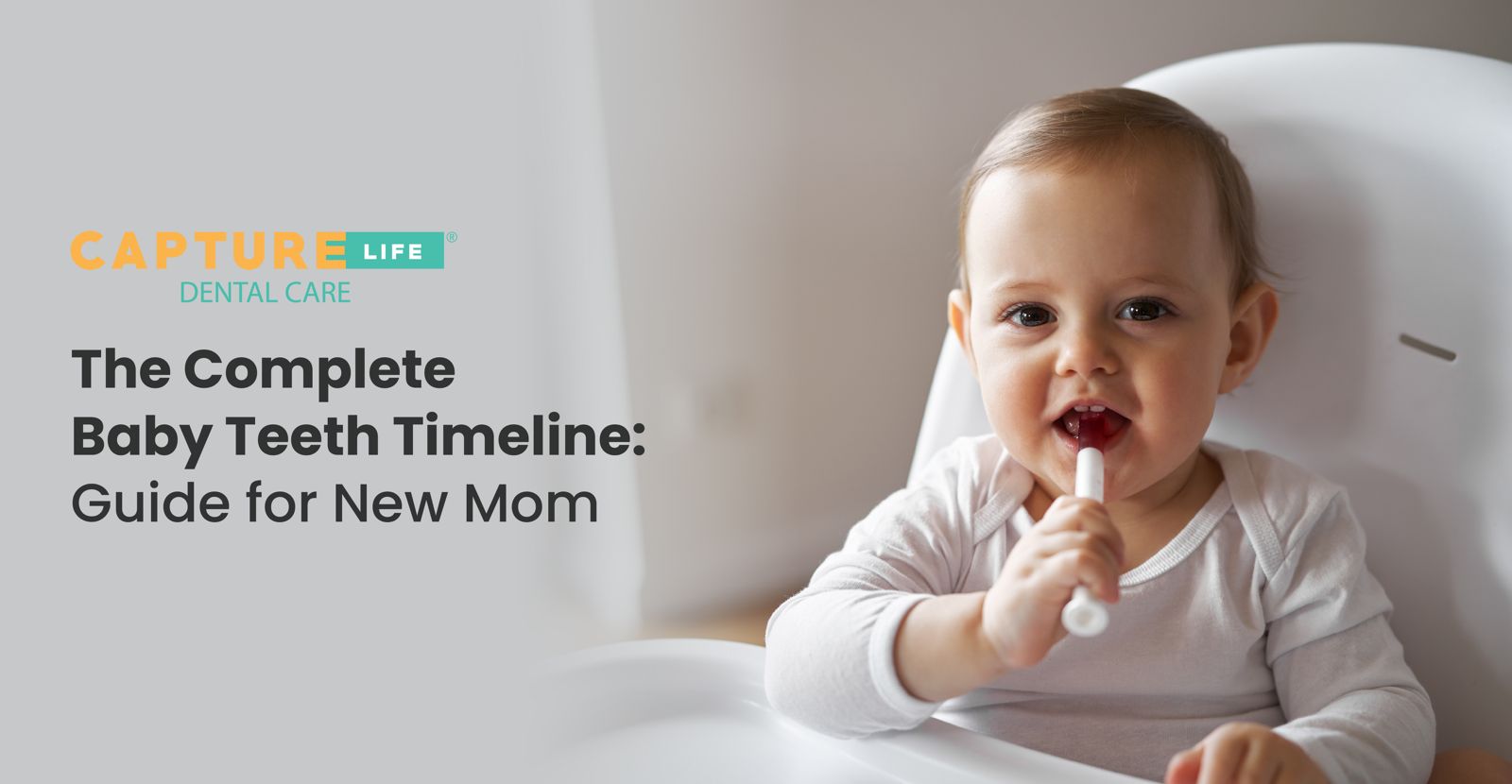
11 Aug The Complete Baby Teeth Timeline: Guide for New Moms
Are you a new mom, wondering when your newborn’s teeth will start erupting?
Understanding the timeline for baby teeth can help you prepare for teething milestones, address discomfort early, and establish strong oral care habits from the start. Here’s a go-to, simple teething chart every parent should save.
Why Baby Teeth Matter
Many parents assume that since baby teeth eventually fall out, they’re less important. The truth is, these primary teeth are essential for chewing, speech development, jaw alignment, and holding space for permanent teeth. Early neglect can affect your child’s long-term dental care needs.
Baby Teeth Eruption Timeline
Birth to 6 Months
Most babies are born without visible teeth, but their tooth buds are already developing under the gums. Some rare cases may have a natal tooth at birth. At this stage, focus on cleaning the gums with a soft cloth to maintain oral hygiene.
6 to 10 Months – Lower Central Incisors
The first teeth to appear are usually the bottom front teeth. This is also when teething discomfort begins for many infants.
8 to 12 Months – Upper Central Incisors
Your baby’s bright smile starts to form with the top front teeth coming in.
9 to 13 Months – Upper Lateral Incisors
These are the teeth next to the front two, giving a more complete smile.
10 to 16 Months – Lower Lateral Incisors
The lower set of lateral incisors follow shortly after.
13 to 19 Months – First Molars
Located at the back of the mouth, these teeth help with chewing.
16 to 23 Months – Canines (Cuspids)
These sharp teeth help tear food and complete your child’s bite pattern.
23 to 33 Months – Second Molars
The last set of baby teeth to erupt. By age three, most children have all 20 primary teeth.
Teething Symptoms to Watch For
Teething doesn’t always cause discomfort, but some babies may experience:
- Sore or tender gums
- A slight rise in body temperature (not fever)
- Chewing on objects
- Irritability or cranky behavior
How to Soothe Teething Pain
- Clean gums regularly: Run a soft, clean cloth over gums twice a day to maintain oral hygiene.
- Cool comfort: Offer a refrigerated pacifier or teething toy (never frozen).
- Control drool: Use a soft bib to prevent moisture-related rashes.
Laying the Foundation for Lifelong Dental Health
Your baby’s first dental visit should be scheduled by their first birthday or within six months of the first tooth eruption. This ensures early monitoring by a dental specialist in Banjara Hills and helps establish a routine of preventive dental care.
Conclusion
Knowing the baby teeth timeline equips you to care for your child’s developing smile with confidence. By maintaining consistent oral care, you set the stage for strong, healthy adult teeth. For expert guidance on teeth care and early childhood dental clinics in Hyderabad, visit Capture Life Dental Care and ensure your little one’s smile gets the best start possible.

